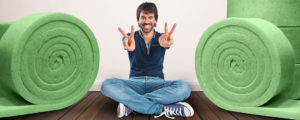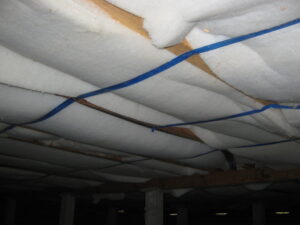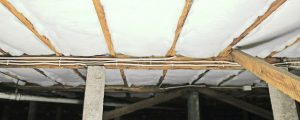Nobody like critters making a mess under their home, so it’s important to choose a material that doesn’t appeal to them. Here’s some advice about choosing an ant and rodent proof insulation.
What attracts ants to insulation anyway?
Ants and rodents are a pain to get rid of, so it’s best you don’t lure them under your home in the first place. Let’s begin with understanding why ants like some types of insulation so much and then we’ll talk rodents.
The quickest way to an ant’s heart is via its stomach. Ants are notorious for having a sweet tooth. You would have seen them in your kitchen when someone didn’t put the lid back on the honey, or water melon juice has dribbled down the face of the cupboard. They can smell it a mile away and no journey is too great when there’s sugar involved.
Here’s the punchline. Some bulk insulation contains glues that are as delicious as fairy floss to ants. The key is to choose an insulation material that does not rely on any glues to hold all the fibres together. That’s just one of the reasons we recommend polyester insulation. Polyester insulation is heat bonded, meaning the fibres are strong and fused together with heat instead of glues so ants aren’t a problem.
Rodent proof insulation: What makes the difference?
 You don’t have to be squeamish to want a ‘rodent-proof-fence’ around your home. Rodents make a mess everywhere they go. They’re smelly, disruptive and can carry diseases. There’s a couple of ways installing the wrong type of insulation can come back to bite you. Here’s what you can do about it.
You don’t have to be squeamish to want a ‘rodent-proof-fence’ around your home. Rodents make a mess everywhere they go. They’re smelly, disruptive and can carry diseases. There’s a couple of ways installing the wrong type of insulation can come back to bite you. Here’s what you can do about it.
Rodents love cosy nests and there are two ways their nesting habits can interfere with your insulation. Either they’ll try to carry it away, or they’ll nest right in between the insulation and the floorboards. So how do we ensure we’ve got rodent proof insulation?
Issue # 1: Nesting Somewhere Else
As a general rule, anything a rat or mouse can pull apart with its claws is at risk of becoming a nest. This means that if you choose a bulk insulation that relies on glues to hold the fibres together, over time that glue will weaken and the insulation becomes inviting for tiny claws.
As you know, polyester insulation is heat-bonded. This means that the fibres are fused together with heat, making it resistant to rodents’ scratching technique. Not only is it impossible for rodents to pull apart polyester insulation, their little claws actually catch and they steer clear of it to avoid the risk of becoming trapped.
Issue # 2: Nesting in Your Insulation
Sometimes rats and mice don’t even bother carrying insulation away. If your insulation lets them crawl between the insulation and the floor boards, you’ve got the potential for trouble. This includes loose fitting solutions like packing strap, wire or nails. If a rodent can get in there, they’ll snuggle and breed between the layers because it makes a delightfully cosy hideaway for them and their offspring. And, take our word for it, if a rat dies in the nest they’ve made under your home, you’ll smell it pretty quickly.
So, that brings us to the big question: What is the best rodent proof insulation technique? The key is to deny access in between the insulation and the floor. How do we do this? We staple our insulation to the floor joists every 10-15cm. This means that the insulation stays firmly against the floor long-term, locking in your comfort and locking out rodents! Watch a video of how we staple insulation here.
We’ve been using this rodent proof insulation technique for over a decade, and in all of our time installing it with staples we’ve never had a rodent issue. The only instance where you may run into trouble is if you are installing a second layer of material over the bulk insulation, such as reflective sheet. We don’t see this as necessary and see fantastic results achieved with a single layer of high quality polyester underfloor insulation.
A word of caution when stapling underfloor insulation…
Not all bulk insulation is right for stapling because the fibres may too weak to hold in place in the longer-term. Stapling fibreglass insulation, for example, is virtually impossible because the glass fibres squash and break allowing the staple to fire straight through. This is another instance where the heat-bonded quality of polyester will work in your favour.
You can learn more about what staplers and staples we use and recommend by clicking here.






